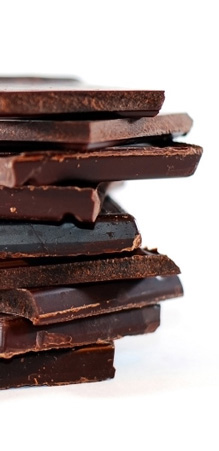
|

July 2008 - Barnes & Noble
 The Taste of Sweets is selected as part of Barnes & Noble's Discover Great New Writers program.
The Taste of Sweets is selected as part of Barnes & Noble's Discover Great New Writers program.
May 2008 - The Food Section
 The Food Section talks sweets with an author Q&A. Click here to see what she has to say.
The Food Section talks sweets with an author Q&A. Click here to see what she has to say.
May 2008 - Body + Soul Magazine
 Managing your appetite is sometimes a case of mind over matter...delicious, delicious matter. Click here to read more.
Managing your appetite is sometimes a case of mind over matter...delicious, delicious matter. Click here to read more.
May 2008 - Shape Magazine
 The Taste of Sweet gets a healthy seal of approval from Shape. Click here to see the article.
The Taste of Sweet gets a healthy seal of approval from Shape. Click here to see the article.
April 2008 - The Wall Street Journal
 The Wall Street Journal balances the books and its diet with help from the Taste of Sweet. Find out the bottom line here.
The Wall Street Journal balances the books and its diet with help from the Taste of Sweet. Find out the bottom line here.
April 2008 - Gothamist
 An apple tart recipe worthy of gothamist's Big Apple. Find it here.
An apple tart recipe worthy of gothamist's Big Apple. Find it here.
April 2008 - Story Broads
 Suzanne Forster takes the quiz and realizes it's all a question of taste. Read it here.
Suzanne Forster takes the quiz and realizes it's all a question of taste. Read it here.
April 2008 - AOL Food
 AOL takes on the Supertaster Quiz and passes with flying colors. Take the interactive quiz here.
AOL takes on the Supertaster Quiz and passes with flying colors. Take the interactive quiz here.
April 2008 - People Magazine
 The Taste of Sweet makes People's "Great Reads" list. Click here to see the article.
The Taste of Sweet makes People's "Great Reads" list. Click here to see the article.
April 2008 - Fitness Magazine
 Fitness' Fit 5 Musts for This Month features The Taste of Sweet. Click here to see the article.
Fitness' Fit 5 Musts for This Month features The Taste of Sweet. Click here to see the article.
April 2008 - The Cupcakery
 Some sweet words from the fine folks at The Cupcakery. Click here to read more.
Some sweet words from the fine folks at The Cupcakery. Click here to read more.
March 2008 - Cakespy
 Cakespy gives its readers a little food for thought. Click here to read more.
Cakespy gives its readers a little food for thought. Click here to read more.
March 2008 - Nonfiction Addiction
 Nonfiction Addiction gets the craving for something sweet. Click here to read more.
Nonfiction Addiction gets the craving for something sweet. Click here to read more.
January 2008 - Publishers Weekly
 In her thoughtful first book, Chen, a
longtime magazine editor and writer,
examines the physical, psychological and
historical relationship between sweet flavors
and humans, especially Americans.
She begins by looking at how we taste by
examining the human tongue, and taste
buds in particular, meeting up with a psychologist
whose work strongly suggests
that some of us simply taste things differently.
But while the tongue just absorbs
this information, the stomach and the
brain communicate what we like, what we
want more of, whether we’ve had enough
or whether one or the other or both wants
to override the system for a variety of
reasons, including emotional ones, and
permit overindulgence. The author follows
a technician whose work includes
finding and using flavor components such
as the “1950s strawberry.” Turning her
focus to stateside sweetness in the second
half of the book, Chen argues that for a
variety of historical and cultural reasons
we Americans are uniquely vulnerable
to sweetness because of external factors,
thus, our uneasy relationship with it. The
result is a large industry for and about
sugar, another against, yet another for
artificial sweeteners and connected others
such as those for nutrition, exercise
and diet.
In her thoughtful first book, Chen, a
longtime magazine editor and writer,
examines the physical, psychological and
historical relationship between sweet flavors
and humans, especially Americans.
She begins by looking at how we taste by
examining the human tongue, and taste
buds in particular, meeting up with a psychologist
whose work strongly suggests
that some of us simply taste things differently.
But while the tongue just absorbs
this information, the stomach and the
brain communicate what we like, what we
want more of, whether we’ve had enough
or whether one or the other or both wants
to override the system for a variety of
reasons, including emotional ones, and
permit overindulgence. The author follows
a technician whose work includes
finding and using flavor components such
as the “1950s strawberry.” Turning her
focus to stateside sweetness in the second
half of the book, Chen argues that for a
variety of historical and cultural reasons
we Americans are uniquely vulnerable
to sweetness because of external factors,
thus, our uneasy relationship with it. The
result is a large industry for and about
sugar, another against, yet another for
artificial sweeteners and connected others
such as those for nutrition, exercise
and diet.
|



